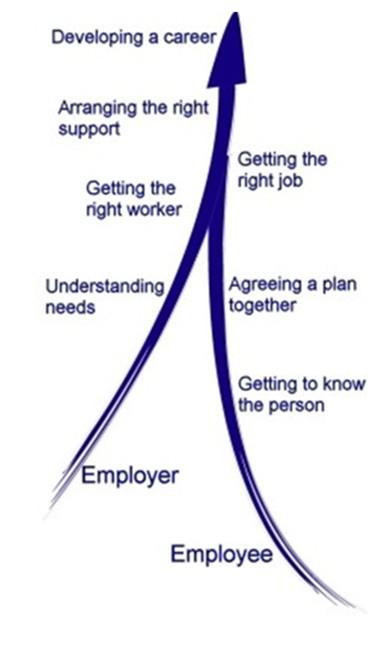

Ability NOT Disability
Connect to Work
A Business Case for Employers

Introduction to Connect to Work Scheme
Connect to Work is a new employment programme underpinned by supported employment practice that is being introduced in April 2025. The programme will provide employment opportunities to people with disabilities, and those who experience complex barriers for staying in employment. It is expected that when the scheme has fully rolled out, it will help support up to 100,000 people.



Aims:
The aim of this deck is to begin a conversation on inclusive employment and providing visibility to this as a viable pipeline for employers and tool to help more Londoners into work.




There are 14.6 million disabled people in the UK.
Around 20% of working age adults are disabled.

Disability defined


A physical or mental impairment that has a substantial and long-term adverse effect on an individual’s ability to perform normal day to day activities.




Over 80% of disabilities are non- visible (not immediately apparent).

Disability is not always ‘obvious’
Visible
Disfigurement
Limb loss
Wheelchair user
Sight loss
Hearing loss



Non-visible (not immediately apparent)
Neurodiversity (Dyslexia, Autism, ADHD etc)
Difference between 'Learning Difficulties'
& 'Learning Disabilities'
A learning disability constitutes a condition which affects learning and intelligence across all areas of life.
A learning difficulty constitutes a condition which creates an obstacle to a specific form of learning, but does not affect the overall IQ of an individual



Why focus on disability inclusion
• Tapping into the full range of talent available
• Building a workforce that reflects the diverse range of customers in the community
• Bring additional skills to your business, i.e. creative thinking, BSL
• Improved reputation and brand awareness (positive impact on talent attraction)
• Reduce the risk and time/resource implications of litigation
• Attracting disabled customers and service users, i.e. the £274bn Purple Pound
• Getting disability inclusion right also benefits others, e.g. the elderly, expectant mothers
• Retention - Realistically somewhere between 5% and 15% of any workforce has a disability or long-term condition – Why wouldn’t you want to retain talented people, good workers, experience and skills?



Some underpinning values
People with disabilities and/or disadvantages can make a positive contribution in the workplace
With the right job and the right support, everyone who wants to work, can work
Supported employment models work on a premise of 'place, train and maintain'



Overview of Supported Employment



The Model




Step 1 - A person looking for work contacts one of our job brokerages
Step 2 - The person is assessed, and we find out what skills they have and what support they need.
This part of the process also includes finding out jobs and industries that are suitable and not suitable.
Step 3 - We engage with businesses and employers to identify their needs. Some vacancies are known to you, and some aren’t. We will work with you to understand your needs and gaps. We will then offer solutions that lead to increased productivity!
Step 4 - We match you with a candidate and we support you with onboarding that candidate into your team.
Step 5 - We will continue to maintain contact with you and your employee for as long as you need us!

The Impact





Examples in Practice




Job Carving
Job carving is a term for customising job duties and can used in different circumstances:
To create job roles using the skills of their staff, working towards their strengths and meeting a business need
To swap job duties to make the most of individual skills
Individual Placement and Support (IPS)
• IPS is an employment support service integrated within community mental health teams for people who experience severe mental health conditions. The aim of the IPS model is to help people find and retain employment. The diagram below shows how this is done. Employer encounters Placement In-work training/modelling and support Monitoring and sustainment
Support
• All job brokerages across the region offer support to employers
• Local London are creating tools to help you navigate support available (website and toolkit)
• Training and workshops
• Connecting you to talent and open to listening to your needs







What will you do differently?








